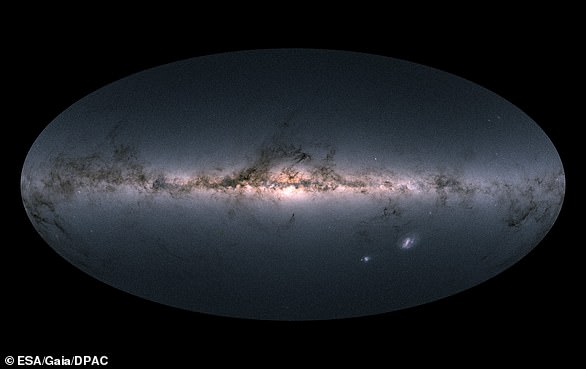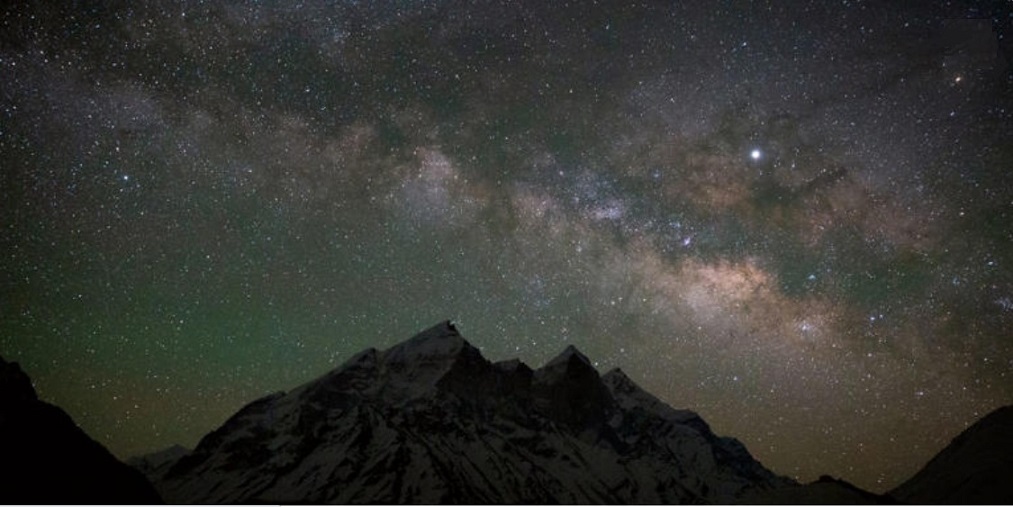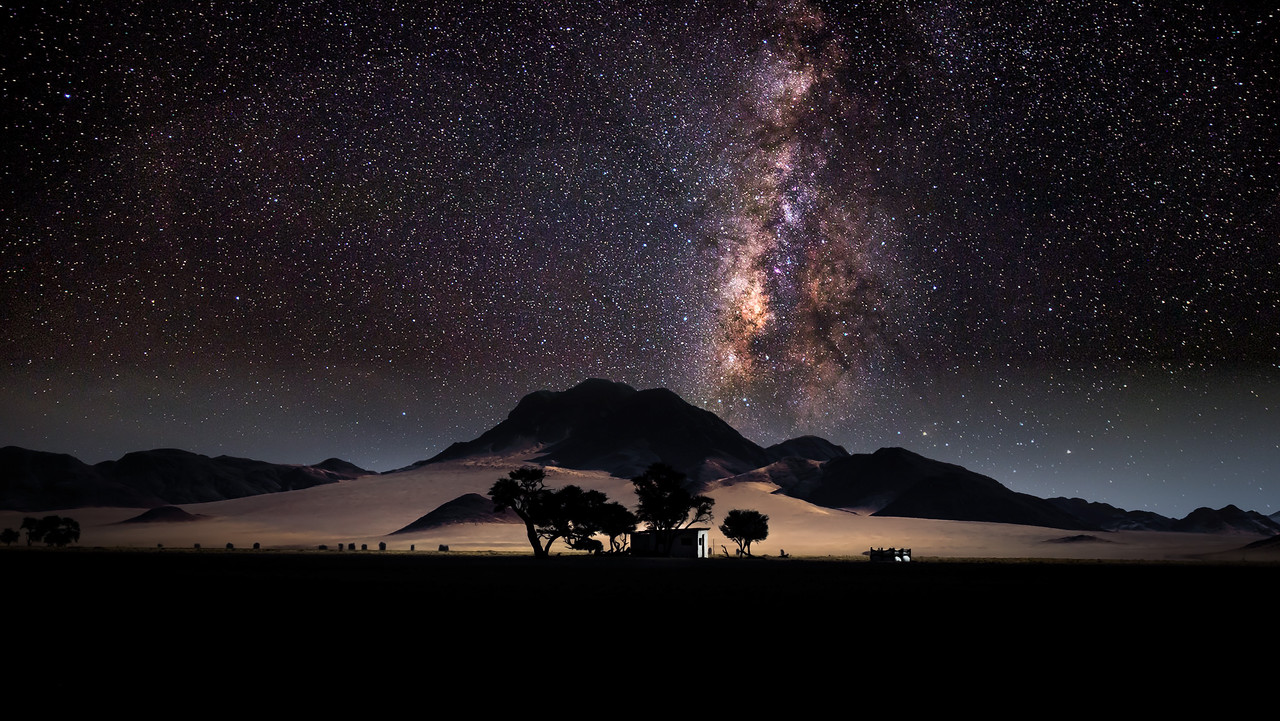
3D Map of the Milky Way
SMILKY WAY
The most detailed map ever - 2020
Now we know what we are and how insignificant we are in the universe
Home †|††DestpÍk††|††Ana Sayfa

3D Map of the Milky Way

A Galaxy year = 225 million years
What Is The Milky Way Exactly?
Facts About The Sun: Information, Fun Facts, History & More
The white milky edges are a buildup of millions and millions of bright stars.

Another project using an early release of the data includes a map showing the movement of the stars in our immediate stellar neighbourhood - that is within about 300 light years of the Earth. They are shown as streaks of white across the galaxy plane
Astronomers from the UK have created a new map and census of stellar objects in the Milky Way made up of nearly two billion stars using data gathered by the European Space Agency (ESA) Gaia space observatory.
Experts from institutions across Europe, including the University of Cambridge worked on the latest tranche of data gathered during the telescopes five year mission to study the motion, position and colour of stars.
Cambridge researchers led the creation of the cosmic atlas of two billion stars, that they believe could shed light on how our galaxy came into existence and what might happen to it in the distant future.
The detailed map is based on the most recent data released by the ESA Gaia mission - which has two satellites 930,000 miles from Earth measuring the distance to and between stellar objects throughout the galaxy.
The map and accompanying data will allow astronomers to gain a deeper understanding of our own galaxy, how stars are spread out, and even identify stars that are similar to our own Sun for further, more detailed study.
Another project using an early release of the data includes a map showing the movement of the stars in our immediate stellar neighbourhood - that is within about 300 light years of the Earth.
The latest release from the Gaia observatory is the most detailed ever catalogue of the stars in the Milky Way - the last set of published data included details on 1.6 billion stars, this brings that up to two billion and in more detail.
It also includes information on our satellite galaxies - the Large and Small Magellanic clouds and the bridge of stars that link the two collections of stellar bodies.
Dr Floor van Leeuwen, who led the 3D map project at Cambridge, said this tool will become one of the major backbones of modern astrophysics, providing scientists with new ways to study our galaxy in detail.
This was one of a number of papers published using an early release of the new data, made available to a selection of researchers before the wider public release on December 3.
These researchers used the Gaia data to provide a huge extension to the census of nearby stars, derive the shape of the Solar System's orbit around the centre of the galaxy, and probe structures in two nearby galaxies.
Launched in 2013, the Gaia satellite operates at the so-called Lagrange 2 (L2) point - a gravitationally stable spot in the Sun-Earth system and measures the position and brightness of stars, along with their magnitudes and colour.
The primary objective of Gaia is to measure stellar distances using the parallax method. In this case astronomers use the observatory to continuously scan the sky, measuring the apparent change in the positions of stars over time, resulting from the Earth's movement around the Sun.
The Gaia data will also allow astronomers to measure the mass of the Milky Way by analysing the 'gentle' acceleration of the solar system as it orbits around the galaxy, according to the European Space Agency.
Two previous releases included the positions of 1.6 billion stars. This release brings the total to just under 2 billion stars, whose positions are significantly more accurate than in the earlier data.

The movement of almost 75 thousand stars from the Gaia Catalogue of Nearby Stars in their orbits around the centre of the galaxy have been mapped by Gaia and that data is helping astronomers discover more about our stellar neighbourhood
Gaia also tracks the changing brightness and positions of the stars over time across the line of sight (their so-called proper motion), and by splitting their light into spectra, measures how fast they are moving towards or away from the Sun and assesses their chemical composition.
It is thought that, over a year, the Sun accelerates towards the centre of the galaxy by 7mm per second, while orbiting at a speed of about 124 miles (200 km) a second.
One study using the data looked out, away from the centre of the Milky Way to trace the various populations of older and younger stars towards the very edge of our galaxy - the anticentre.
Computer models predicted that the disc of the Milky Way will grow larger with time as new stars are born.
'The new data allow us to see the relics of the 10 billion-year-old ancient disc and so determine its smaller extent compared to the Milky Way's current disc size,' ESA wrote.
Astronomers will also be able to deconstruct the two largest companion galaxies to the Milky Way - the Small and Large Magellanic Clouds - using the data from Gaia.
The two galaxies are connected by a bridge of stars thought to be 75,000 light years long, according to researchers examining the new data.
Having measured the movement of the Large Magellanic Cloud's stars to greater precision than before, Gaia's latest data clearly shows that the galaxy has a spiral structure - just like the Milky Way.
The data also revealed a faint stream of stars that is being pulled out of the Small Magellanic Cloud, and hints at previously unseen structures in the outskirts of both galaxies.
Dr Caroline Harper, head of space science at the UK Space Agency, which provided the funding for the research, said Gaia has allowed for the creation of the most detailed billion-star 3D atlas ever assembled.
'For thousands of years, we have been preoccupied with noting and detailing the stars and their precise locations as they expanded humanity's understanding of our cosmos,' Harper said.
'Gaia has been staring at the heavens for the past seven years, mapping the positions and velocities of stars.'
The data will also include 'exceptionally accurate' measurements of the 300,000 stars that are relatively close to the Sun, within a distance of 326 light years.
The researchers aim to use the information to learn more about the fate of the Milky Way by predicting how the galaxy will change in the next 1.6 million years.
'Gaia EDR3 is the result of a huge effort from everyone involved in the Gaia mission. It's an extraordinarily rich data set, and I look forward to the many discoveries that astronomers from around the world will make with this resource,' says Timo Prusti, ESA's Gaia Project Scientist.
'And we're not done yet; more great data will follow as Gaia continues to make measurements from orbit.'
Source: Link

Launched in 2013, the Gaia satellite operates at the so-called Lagrange 2 (L2) point - a gravitationally stable spot in the Sun-Earth system and measures the position and brightness of stars, along with their magnitudes and colour

Artist's impression of Gaia mapping the stars of the Milky Way. Gaia maps the position of the Milky Way's stars in a couple of ways. It pinpoints the location of the stars but the probe can also plot their movement, by scanning each star about 70 times
Astrophysicists also hope to learn more about the distribution of dark matter, the invisible substance thought to hold the observable universe together.
They also plan to test Albert Einstein's general theory of relativity by watching how light is deflected by the sun and its planets.
The satellite's billion-pixel camera, the largest ever in space, is so powerful it would be able to gauge the diameter of a human hair at a distance of 621 miles (1,000 km).
This means nearby stars have been located with unprecedented accuracy.
Gaia maps the position of the Milky Way's stars in a couple of ways.

Another project using an early release of the data includes a map showing the movement of the stars in our immediate stellar neighbourhood - that is within
about 300 light
years of the Earth. They are shown as streaks of white across the galaxy plane

Gaia’s all-sky view of our Milky Way Galaxy and neighbouring galaxies, based on measurements of nearly 1.7 billion stars. The map shows the total brightness and colour of stars observed by the ESA satellite in each portion of the sky between July 2014 and May 2016. Brighter regions indicate denser concentrations of especially bright stars, while darker regions correspond to patches of the sky where fewer bright stars are observed. The colour representation is obtained by combining the total amount of light with the amount of blue and red light recorded by Gaia in each patch of the sky.

About two billion stars have been examined in detail by the Gaia satellite, including their positions, motion and colour and that data allowed Cambridge researchers to create a detailed 3D map of the Milky Way

The Sombrero Galaxy


The Ring Nebula

Milky way seen from Namibian Desert

Milky way seen from Namibian Desert


Star birth in the extreme Hubble's view of the Carina Nebula

An astrophysicist and a neurosurgeon walked into a room.
It may sound like the start of a horrible joke, but what a group of Italian academics came up with is a truly galaxy brain take: the structures of the observable universe, they claim, are startlingly similar to the neural networks of the human brain.
In a recent research published in the journal Frontiers in Physics, University of Bologna astronomer Franco Vazza and University of Verona neurosurgeon Alberto Feletti reveal the unexpected similarities between the cosmic network of galaxies and the complex web of neurons in the human brain. According to the researchers, despite being nearly 27 orders of magnitude distant in scale, the human brain and the makeup of the cosmic web exhibit similar levels of complexity and self-organization.
The brain contains an estimated 69 billion neurons, while the observable universe is composed of at least 100 billion galaxies, strung together loosely like a web. Both actual galaxies and neurons only account for about 30 percent of the total masses of the universe and brain, respectively. And both galaxies and neurons arrange themselves like beads on long strings or filaments.
In the case of galaxies, the remaining 70 percent of mass is dark energy. The equivalent in the human brain, the duo said: water.
“We calculated the spectral density of both systems,” Vazza said in a statement about the work. “This is a technique often employed in cosmology for studying the spatial distribution of galaxies.”
“Our analysis showed that the distribution of the fluctuation within the cerebellum neuronal network on a scale from 1 micrometer to 0.1 millimeters follows the same progression of the distribution of matter in the cosmic web,” he added, “but, of course, on a larger scale that goes from 5 million to 500 million light-years.”
The clustering and number of connections emanating from each node also were oddly similar.
“Once again, structural parameters have identified unexpected agreement levels,” Feletti said in the statement. “Probably, the connectivity within the two networks evolves following similar physical principles, despite the striking and obvious difference between the physical powers regulating galaxies and neurons.”
The team is hoping that their preliminary study could lead to new analysis techniques in both cosmology and neurosurgery, allowing scientists to better understand how these structures have evolved over time.